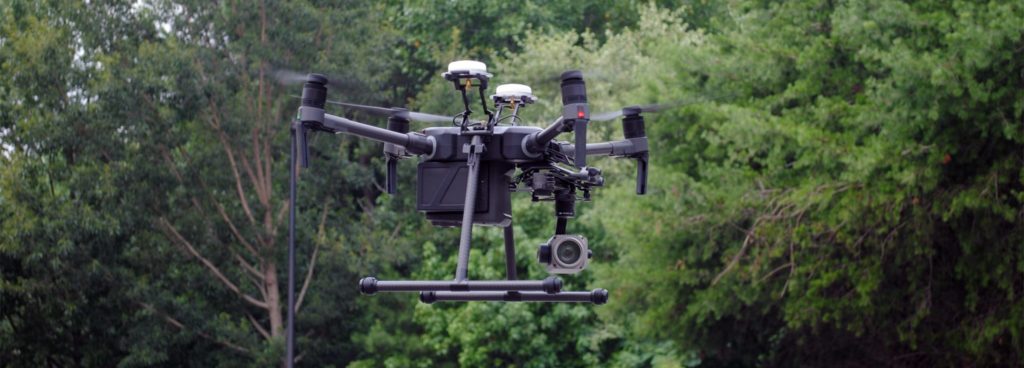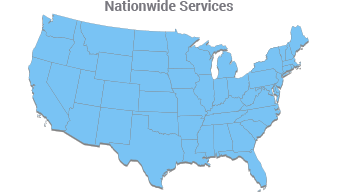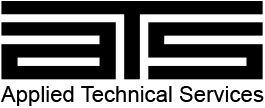- Home
- Services/IndustriesServicesindustries
- About Us
- LocationsStatesAccordion ContentAccordion ContentAccordion ContentAccordion Content
- Job Openings
- Quick Links
- ATS Family

Drone Roof Inspections
Applied Technical Services performs drone roof inspections for commercial clients who need to assess the well-being of their roofing system. Regularly inspecting roofing systems for various warning signs allows businesses to avoid preventable failure and costly repair/replace projects. The same environmental forces that roofs are designed to protect against can also undermine their performance over time: punctures caused by anything from hail to foot traffic can allow moisture to build up under the protective upper layer of the roof, causing mold, rot, and leaks if left untreated. A thorough inspection will reveal damage and other precursors to roof failures, which may then be addressed accordingly. ATS uses drone-assisted visual inspections to investigate whether client roofing systems are in good health.
The conventional method of roof inspection involves sending personnel up a ladder to observe the condition of the roofing system. This procedure has certain limitations, such as inspectors finding certain areas inaccessible and taking a matter of hours to complete their survey of the roofing system. Each of these concerns can decrease the effectiveness of the inspection while increasing its final cost to the client. All of this is in addition to the danger of the technicians falling and injuring themselves. These wealth of reasons make the need for a more efficient method of roof inspection obvious.
Drone-assisted roof inspections remove some of the human element from the equation. For instance, using this inspection method eliminates the danger of falling on the part of the inspector and the risk of liability for injury on the part of the client. Not only do our drone units find no roof area inaccessible due to their tight maneuverability, but also capture those areas in fine detail from any angle conducive to analysis using their high-resolution mounted cameras. Finally, drone roof inspections can be completed much more quickly than an unassisted visual inspection can with a permanent recording of the findings. Each of the advantages that drone-assisted visual inspection offers serves to drive down the final price to the customer as compared to the conventional roof inspection.
ATS' Drone Capabilities
ATS Engineering utilizes a variety of drone units, also referred to as unmanned aerial vehicles (UAVs) or small unmanned aircraft systems (sUASs) to perform our drone roof inspection services for our clients. Our advanced UAVs:
- Can hover to produce extremely stable images and video
- Uses multiple camera mounts for optimization of inspection angles
- Navigate according to a global positioning system that is accurate within centimeters
- Achieve longer flight times with a multi system approach
- Use thermal imaging to help inspectors diagnose specific trouble areas
Furthermore, we have UAVs capable of inspecting conditions inside confined space areas (non-gps environments) such as penthouses and industrial equipment.
UAV Standards and Regulations
The Federal Aviation Administration (FAA) maintains a stringent list of regulations on commercial UAV usage. ATS observes the following rules for every flight, doing our part to keep the airways safe:
- Each flight is piloted by a technician, certified by the FAA to fly UAVs for commercial use
- Each unit is registered under part 107 with the FAA
- Each UAV weighs less than 55 lbs, including any payload, before takeoff
- Each pilot operates their UAV within visual line of sight only during outdoor inspections
- Each UAV is piloted below the regulatory maximum speed of 100 mph
- None of our pilots fly directly over a person’s head
- Our pilots do not operate their UAV from inside a moving vehicle
About ATS and UAV Inspections
ATS has provided consulting engineering, inspection, and testing services of the highest caliber since 1967. In the 50+ years since our founding, we have grown to serve clients based in the United States and around the world. While all industries can benefit from quality roof inspections, the following may find these services to be more critical than would others:
ATS’ drone roof inspections are performed by a team of technicians, made up of one FAA licensed pilot in control of the drone and one expert camera operator. Our team focuses their attention on areas of interest during the inspection and analyzes footage to generate their report on findings and recommendations.
Our Commitment to Quality Assurance and Customer Service
We strive to always provide our clients with clear and accurate reporting, delivered within a short turnaround window by engaged, accessible, and responsive experts. We uphold quality standards to maintain accountability to our clients and help us consistently deliver the service excellence they have come to expect from us.
If your company needs comprehensive examination of your roofing system, contact Applied Technical Services today for one of our drone roof inspections — We take a closer look!

Request Form
"*" indicates required fields
Camera Inspections
